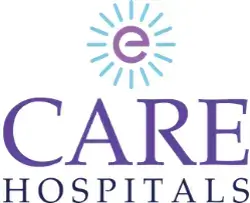-
Doctors
-
Specialities & Treatments
Centre of Excellence
Specialties
Treatments and Procedures
Hospitals & Directions HyderabadCARE Hospitals, Banjara Hills CARE Outpatient Centre, Banjara Hills CARE Hospitals, HITEC City CARE Hospitals, Nampally Gurunanak CARE Hospitals, Musheerabad CARE Hospitals Outpatient Centre, HITEC City CARE Hospitals, Malakpet
HyderabadCARE Hospitals, Banjara Hills CARE Outpatient Centre, Banjara Hills CARE Hospitals, HITEC City CARE Hospitals, Nampally Gurunanak CARE Hospitals, Musheerabad CARE Hospitals Outpatient Centre, HITEC City CARE Hospitals, Malakpet Raipur
Raipur
 Bhubaneswar
Bhubaneswar Visakhapatnam
Visakhapatnam
 Nagpur
Nagpur
 Indore
Indore
 Chh. Sambhajinagar
Chh. SambhajinagarClinics & Medical Centers
Book an AppointmentContact Us
Online Lab Reports
Book an Appointment
Consult Super-Specialist Doctors at CARE Hospitals

Head and Neck Hemangioma
Symptom, Causes, Diagnosis and Treatment
Head and Neck Hemangioma
Hemangiomas are benign tumours formed by an abnormal buildup of blood vessels in the skin or internal organs. These common growths commonly appear in infants and young children. They appear as red or purple lumps and can develop anywhere on the body, specifically on the head, face, chest, and back.
Most hemangiomas follow distinct growth phases:
- Initial rapid growth in the first 2-3 months
- Slowed growth for the next 3-4 months
- Stabilisation period
- Gradual shrinking and fading, starting around age one
Types of Hemangiomas
Doctors classify hemangiomas into several distinct categories based on their location and depth in the body. The most common classification is:
- Superficial Hemangiomas: Superficial hemangioma grows on the skin's surface, appearing as bright red, raised bumps with an uneven texture. These are often called "strawberry birthmarks" due to their distinctive appearance.
- Deep Hemangiomas: Deep hemangioma develops under the skin, creating a bluish or purple-tinted swelling with a smooth surface.
- Mixed or Compound Hemangiomas: These hemangiomas display features of both superficial and deep variants.
Another significant classification includes:
- Infantile Hemangiomas (IHs): These emerge during the first eight weeks of life and undergo a rapid growth phase for 6-12 months
- Congenital Hemangiomas (CHs): Present at birth as fully developed lesions
- Rapidly Involuting Congenital Hemangiomas (RICH): These appear at birth as red-purple plaques and disappear entirely by 12-18 months
- Non-involuting Congenital Hemangiomas (NICH): Present at birth as pink or purple plaques that grow proportionally with the child
Another significant classification includes:
- Capillary Hemangiomas: These consist of small, tightly packed blood vessels held together by thin connective tissue.
- Cavernous Hemangiomas: Cavernous-type hemangiomas comprise larger, dilated blood vessels with blood-filled spaces between them.
Where Can They Occur?
The anatomical distribution of hemangiomas follows a distinct pattern:
- Head and neck region
- Trunk areas
- Extremities
- Within the facial region:
- The lips account for 55.2% of cases
- The cheeks comprise 37.9%
These growths can manifest both externally and internally, with 51.7% of patients experiencing combined intra- and extra-oral involvement.
- Intraoral occurrences: The buccal mucosa is the primary site, affecting 37.9% of cases, followed by the labial mucosa at 25.9%.
- Cavernous hemangiomas often develop around the eye area, appearing on eyelids, the eye surface, or within the eye socket.
- Beyond visible locations, hemangiomas can form in deeper tissues and organs. The liver stands as a notable internal site for these vascular formations. Such internal growths might not display visible surface signs but can cause functional disturbances.
Patients might experience visual loss, hearing impairment, or facial palsy, particularly with large, trans-spatial malformations.
What is the Age Group?
Whilst hemangiomas can develop at any age, these vascular growths primarily affect infants. Research indicates that approximately 10% of babies are born with a hemangioma.
Beyond infancy, hemangiomas affect various age groups differently. Middle-aged adults constitute a significant portion of cases. The prevalence varies across age brackets, with patients aged 20-29 showing the lowest occurrence rate at 1.78%.
The prevalence increases with age, reaching its peak in older adults, where approximately 75% of individuals aged 75 and above develop cherry hemangiomas.
For most children, the shrinking process is completed between ages 3.5 to 4 years.
Risk Factors
The following are some common risk factors of head and neck hemangioma:
- Gender plays a crucial role, with females showing a higher predisposition at a ratio of up to 5:1 compared to males.
- Racial background significantly influences occurrence rates, primarily affecting Caucasian infants.
- Birth-related circumstances stand as substantial risk factors, including:
- Premature birth
- Low birth weight
- Multiple births
- Prenatal hypoxia
- Post-chorionic villus sampling
- Maternal health conditions whilst pregnant markedly affect hemangioma development.
- Family history emerges as another significant factor, with siblings of affected individuals showing twice the risk.
Treatment Options for Head and Neck Hemangiomas
The primary treatment options encompass:
- Drug Therapy:
- Propranolol stands as the first-line treatment, replacing traditional corticosteroids. Most patients show a response within a week of starting propranolol.
- Oral itraconazole presents an alternative option, achieving an 88.97% reduction in hemangioma volume over eight weeks.
- Laser Treatment: Pulsed dye laser (PDL) is the most widely used option, offering high efficacy and safety. The KTP laser system, operating at low output power (2 to 5 W), effectively treats deep hemangiomas whilst reducing ulceration rates from 20% to 2%.
- Surgical Intervention: Whilst no longer the first choice, surgery remains vital for specific cases, especially those involving eyelid or substantial scalp hemangiomas. Early surgical intervention often yields better outcomes, particularly for facial lesions.
- Sclerotherapy: This method, combined with oral medications, demonstrates promising results. The dual approach using sodium tetradecyl sulphate injection alongside oral treatment reduces overall treatment duration.
Conclusion
Head and neck hemangiomas represent complex vascular growths that require careful medical attention and management. Though these benign tumours affect people of all ages, infants face the highest risk, particularly premature babies and those with low birth weight.
Doctors now have several effective treatment options at their disposal. Understanding risk factors helps doctors make better diagnostic and treatment decisions. Most infantile cases resolve naturally over time, though some patients might retain minimal scarring. Adult cases, especially those affecting deeper tissues, might require ongoing medical supervision. Doctors can effectively manage these vascular growths through proper diagnosis and timely intervention, ensuring better patient outcomes.
FAQs
1. Is hemangioma a serious problem?
Most hemangiomas are benign and not serious, but some may require medical attention.
2. When should I be worried about a hemangioma?
Be concerned if it interferes with vision, breathing, or feeding or if it shows rapid growth or ulceration.
3. How to stop a hemangioma from growing?
Treatment options include beta-blockers, corticosteroids, or laser therapy, as a doctor prescribes.
4. At what age do hemangiomas stop growing?
Typically, hemangiomas stop growing and begin to shrink (involute) by 12-18 months of age.
5. What is the root cause of hemangioma?
The exact reason is unknown, but it's believed to be related to placental tissue during pregnancy.
6. What are the side effects of a hemangioma?
Potential side effects include ulceration, bleeding, scarring, or complications if located near vital organs.

Still Have a Question?

